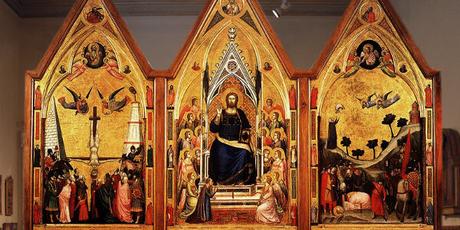
The Vatican Museums are home to one of the largest collections of artwork in the world. These sprawling subsets of Italian history all house masterpieces by household names as well as the world-famous Sistine Chapel, but it’s unlikely you’ll get a chance to see everything in your visit. This is why it’s important to pick exactly what you want to see.
To help you out, we’ve listed what you can see at the Vatican Museums.
1. The Pinacoteca
Art lovers will seriously enjoy the Pinacoteca gallery, which is made up of no less than 18 different rooms, all of which are laid out in chronological order. You can take a walk down memory lane, soaking up pieces from the Medieval age right up until the 19th Century.
This collection was originally put together by Pope Pius XI, after he gathered together and organised a rich collection of paintings by previous popes. Today, you can see more than 450 paintings, including world-famous works by the likes of Giotta, Caravaggio, Leonardo da Vinci, and Raphael.
2. The Pio-Clementino Museum
If you’re into sculpture, the Pio-Clementino Museum is the place to go. This is the largest part of the Vatican Museums, with numerous different rooms dedicated to the most prominent Greek and Roman sculpture masterpieces ever made.
This section of the Vatican Museums was expanded by Pope Pius VI after it was started by Pope Clement XIV in 1771.
3. The Gallery of Geographic Maps
Geography lovers will enjoy wandering through the impressive collection of maps in the Gallery of Geografic Maps. This gallery spans the hallway leading the Sistine Chapel and boasts some of the most colourful and fascinating artworks in the whole of the Vatican Museums.
4. Gregorian Egyptian Museum
Step back in time and explore the mesmerising antiquities of Egypt in the Gregorian Egyptian Museum. Founded by Pope Gregorious XVI in 1839, it is made up of nine separate rooms, all of which house artefacts from ancient Egypt. In the last two rooms, you can discover finds from Ancient Mesopotamia and Assyria as well.
5. Raphael’s Rooms
The Sistine Chapel is by far the most famous part of the Vatican Museums, but Raphael’s Rooms come a close second. They once formed part of the apartments of Pope Julius II who initially gave the frescoes to Raphael to work on between 1508 and 1520, during the time that Michelangelo was working on the ceiling fresco in the Sistine Chapel.
Advertisements
